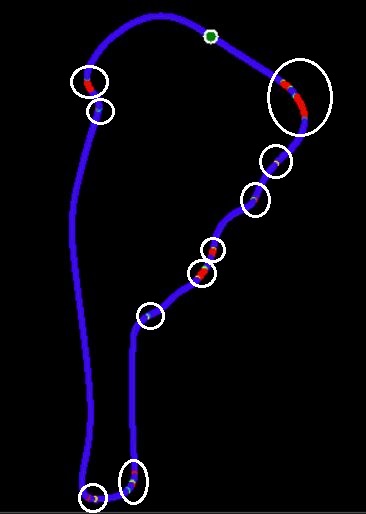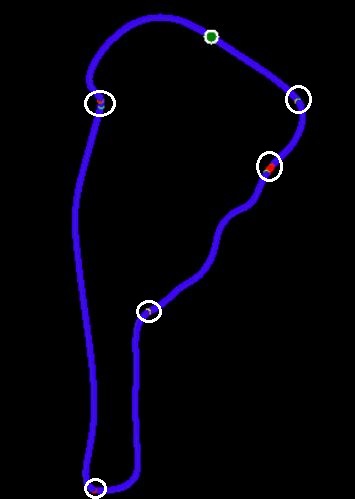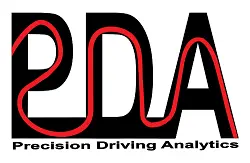Is Coasting Bad for Racecar Driving?
Driving Fast: Is Coasting Bad?
I have heard many times that the driver should either be on the throttle or the brake and they should never be coasting (no throttle and no brake). But is coasting always bad? After looking at pro race car driver data or simply data of really quick drivers, I have surmised that coasting is not always bad. Unnecessary coasting is bad but sometimes coasting results in a faster lap time.
Below are two Coasting Track Maps with one (Map 1) showing coasting (shown in red) that is unnecessary. Meaning, the coasting is costing the driver time. The most likely reason for this coasting is because the driver is unsure of themselves and/or the car’s ability to stay on the track. In this case, it was the driver’s first time at Road Atlanta and they were still learning the track so the coasting was understandable. The second graph (Map 2) shows necessary coasting.
As you can see, this happens when the driver has turned into a corner, has released their foot off of the brake pedal, and has felt that the front tires do not have enough grip for them to start applying throttle. If they did apply throttle, the load would be transferred off of the front tires and understeer would develop. The car is still slowing down so I consider this to be the very end of the trail braking phase. Timing the brake release so that the foot comes off of the brake pedal at the apex is difficult and this little bit of coasting is not costing a lot of time. It would cost the driver much more time if they started applying throttle too early and had to lift due to the understeer that developed. I highly recommend looking for coasting in the data and then make the decision as to whether that coasting is needed or not. The data never lies! We are Precision Driving Analytics and we offer racing services for helping you to improve your speed and driving ability.



